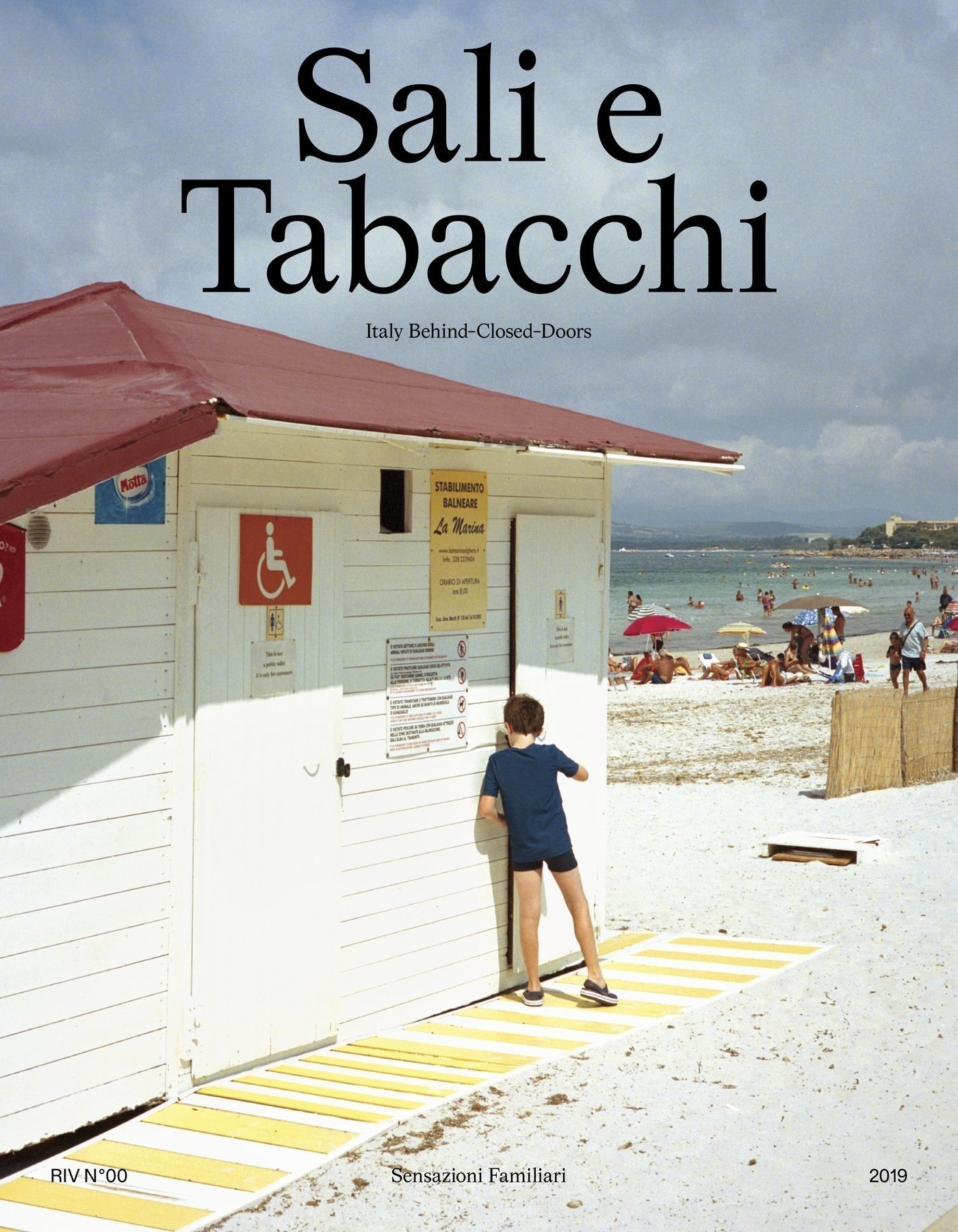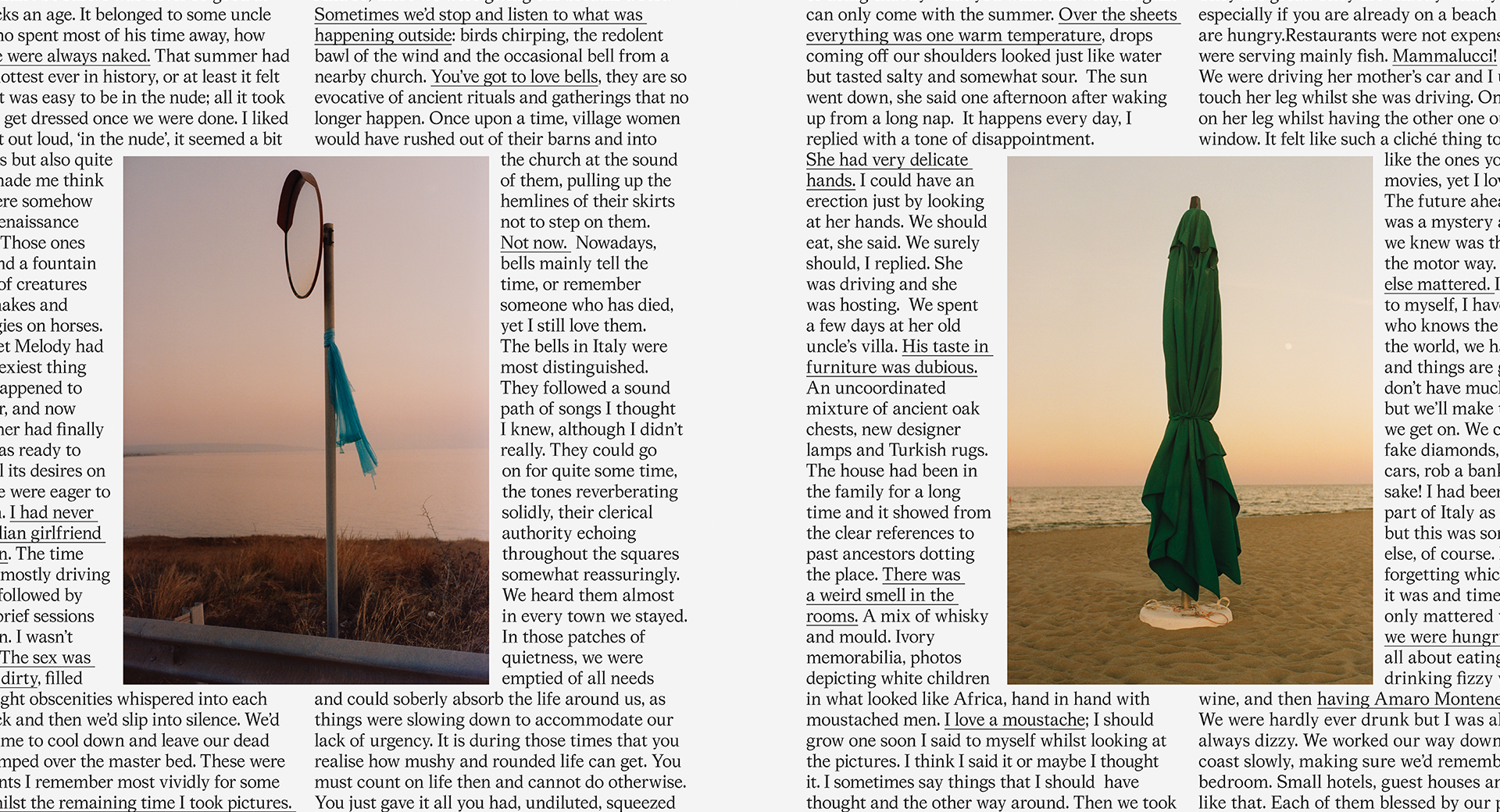- About
-
Discover
City Guides, Tour Guides, Insider's Guides
-
Experience
Book your next trip
-
Lab
Book the digital Experiences
-
Hidden Gems
Hotels. Restaurants, Bars

We interviewed the founding duo behind Sali e Tabacchi Journal to introduce you to our latest project - Estate Italiana
This summer The Maptique brings you around Italy. First up on our tour around Italy and introducing the series is the founding duo behind Sali e Tabacchi Journal – the independent magazine recounting Italy behind-closed-doors – Elisa Carassai and Leonardo Pellegrino, respectively a journalist and (our!) content editor and an art director.
From Umbria to Lucania to Milan and more, the duo takes us on a journey through their favourite places in Issue 00, which is dedicated to ‘sensazioni familiari’, and reveal some of the favourite places and the rituals they happened to discover for their upcoming Issue on spirituality.
Sali e Tabacchi, starting from the name, tell us your story.
E: We met almost three years ago while Leonardo was studying at Central Saint Martins and I was at London College of Fashion. We decided to create Sali e Tabacchi Journal as a way to celebrate our country from far away, being both expats, having moved to London a while ago for university. While much of the magazine’s content looks at Italy’s unknown rituals and traditions, a large portion of its pages are dedicated to showcasing Italian creative entrepreneurs and artists on land and abroad. The goal here is to objectively depict our country and subvert traditional expectations of what and who Italians really are.
L: Sali e Tabacchi was born in a really emotive way. It really started for nostalgia for home being based in London and by the realisation of the beauty of things that we gave for granted by being born in Italy.
It came from the urge to communicate these feelings, and communicating them in a non literal way. The name is a great example of our approach. We wanted to shout Italy without saying Italy. The icons of the white “T” on blue background is almost like a hidden Italian flag. You can find it every about 300 meters in every corner of our country. What could have been a better name than “Sali e Tabacchi”?
Tell us your secret “posti del cuore” in Italy, perfect for an Italian summer.
E: I might be biased but Cento Ulivi, my aunt’s boutique bed and breakfast located between Golfo Aranci and Olbia in Sardegna is one of my favourite places in the world. I practically grew up in Sardegna, spending my summer holidays every year there since I was a baby. And Sardegna’s Costa Smeralda is one of the dreamiest places you could ever spend your #EstateItaliana.
L: For a matter of parochialism I would say Umbria. I recommend to visit Fondazione Burri in Città di Castello, Castelluccio di Norcia, the Trasimeno Lake, especially Isola Polvese, Perugia and all the little borghi around it and definitely a trip to Tommaso Buzzi’s utopian city “La Scarzuola” which will be featured in our issue 01.
One of your goals is to introduce your readers to an authentic Italy, far from the stereotypes. Can you tell us some places where you can best experience this authenticity?
E: Some of these places you’ll see in our next issue, dedicated to spirituality. We always suggest visiting antique villages and hamlets, which are frozen in time and are still proudly celebrating rituals and traditions or blend art with tradition. Gibellina and I cretti di burro in Sicily are one of them. On the other hand, the typical ‘sagre’ also embody this spirit. Popular festivals and ’sagre' have always been characterized by a ritual and sacred component.The same term comes from the fact that at one time this kind of ritual was held in front of temples or churchyards. We suggest paying attention to specific dates when the specific local celebrations are happening - because if you’re lucky you’ll be able to witness charming performances. Honestly if you pay close attention and do a bit of research you can witness this kind of everywhere around Italy - that’s the true beauty and uniqueness of our land. Every one of these sagre is dedicated to elevating food, agriculture, or something pure. Unfortunately, this summer though, a lot of events have been cancelled…
BUT some of our favourites are: I gigli di Nola, la macchina di viterbo, la festa dei serpari ad Arezzo...
L: I don’t think there are specific places that describe what we do. But I think in general that the concept of the provincial towns could be an interesting take on this. They are always put in the background and famous for not being very openminded, which is very true. But it’s also true that they are full of hidden treasures to discover. The best way to appreciate authenticity is probably not to take a Frecciarossa but to take a very slow inter-regionale train which will probably have delays.

Given your collaboration with @lapanzapiena, which are the super Italian and unknown dishes that best embody our traditions and that everyone should try at least once?
E: I have a weird obsession for mountain food. I learned how to ski at 2 years old, at Courmayeur in Val D’Aosta, so stopping by to have a warm soup or some polenta helped mom convince me to keep skiing until the end of the day. So, I would have to probably say Zuppa Valpellinentze, which I have failed repeatedly at making at home - but if you manage to nail it, it can truly become the best comfort food for winter. But since we’re talking about summer here, I’ll also add a summery dish in, something I’ve tried once and it is mindblowingly good - Pici Cacio Pepe con tartare di gambero rosso di Mazara. Eating a smaller portion but adding that portion of fresh shrimp makes it such a fresh and special plate.
L: Torta al testo, definitely! It’s an Umbrian savoury bread. The classic filling is erba e salsiccia (Spinach and Sausages), I would recommend stracchino and rucola for the vegetarians. I remember Elisa’s face the first time she tried it and I’m sure she loved it.
Italy is the place to be as far as culture is concerned. What are the off-the-grid-places to go to immerse yourself in this millenary culture?
E&L: A place we’ve recently discovered because of research we’ve been doing for Sali&Tabacchi Journal is the historical region of Lucania, in Basilicata. This region was celebrated by the design duo behind Formafantasma last year, as Matera was the city of culture of 2019. So, we’d definitely say Matera, Maratea and the ghost town of Craco are must-sees. If you’re into mythology and historical legends we’ve also been discovering plenty of stories related to rituals and traditions of the area, as the ‘Lucani’ are deeply attached and inspired by the archetypal power of nature. and you must not miss the festivals celebrating nature such as Tricarico’s Carnival. Unfortunately, this summer though, a lot of events have been cancelled, so we’d suggest doing a tour of the parks and the surrounding mountainous area.
Vintage postcards, which are the places that recreate this Dolce Vita mood?
E: Traditional dolce vita-style inspired places such as Amalfi, Positano and Capri are lovely and perfect - but only during the off season. I would honestly suggest any little island off the beaten track, from Sicily’s Salina to Campania’s Procida.
L: Varigotti in Liguria. I was there shooting a commercial campaign in September 2018, we went super early to get the very first light, around 7.00 AM and two children started running from one of the houses on the beach into the sea. Half an hour later their mum called them back to get ready to go to school. I remember thinking: “What a dolce vita”.
